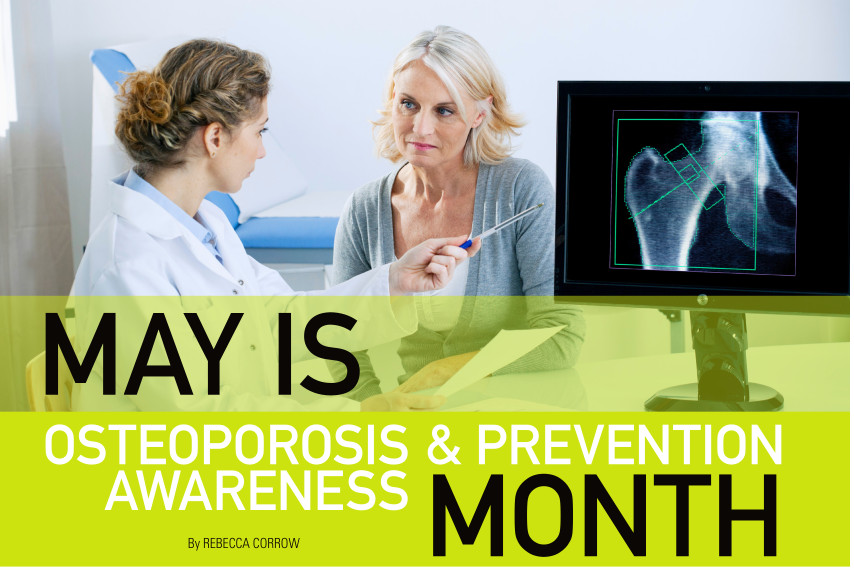
About 54 million Americans have low bone density or osteoporosis. As we age, bone density screening tests are important to do because osteoporosis and low bone density increases the risk of fractures and breaks with falls.
To keep bones strong, the body breaks down old bone and replaces it with new bone. Our bone mass peaks at age 30. In mid-life, our bone mass starts slowly declining and eventually bone loss will overtake bone build-up. For women, bone loss speeds up during menopause. By age 65, bone density decreases for both men and women gradually.
One of the most common ways to diagnose osteoporosis is a bone density scan, which measures the amount of mineral, such as calcium, in your bones. We use a machine called a dual-energy X-ray absorptiometry (DEXA or DXA). A DEXA scan is a simple test that’s non-invasive, painless and only takes a few minutes. The patient lies on the DEXA table while a movable arm scans the hip and spine. Patients don’t need to undress if there are no buttons or zippers in the hip and spine area.
The bone density scan only takes 5-15 minutes. The scan exposes people to very little radiation, far less than we get on a cross-country airplane flight. When your Mankato Clinic provider orders the test, our Patient Services department will help you schedule it, let you know what to expect and give you a few directions for testing. Every test is reviewed by a radiologist.
Who should get a bone density test?
- Women age 65 years and older.
- If you’re a woman with risk factors such as early menopause, smoking, a family history of osteoporosis, or have taken certain medications, your provider may want to start bone density scans at an earlier age.
- Anyone who has broken a bone after age 50 or lost 1.5 inches in height.
- Men over age 70 are encouraged to talk with their healthcare provider about risk factors and a bone density scan.
The DEXA scan measures the bone density by giving a T-score. A normal score is zero to -1. A lower score indicates osteoporosis or osteopenia, which is low bone density that’s not as severe as osteoporosis.
If your bone density score is below normal, your healthcare provider is likely to recommend a follow-up bone density scan. Based on your test results, your next scan could range from a 2-year to 10-year time frame. Talk with your healthcare provider about what is best for you based on your individual factors.
Treatment
We can improve bone density and treat osteopenia and osteoporosis with a wide range of options. To start, there are simple lifestyle measures that anyone can do at home. Weight-bearing activities, such as walking, and proper calcium and vitamin D supplementation is the foundation for bone health.
We may also prescribe medications that slow bone loss or rebuild bones. The most common medication used is Fosamax (alendronate), a once-weekly pill, that helps prevent the worsening of osteoporosis. If you don’t like pills or have a sensitive stomach, there are injectable options such as once-yearly Reclast or twice-yearly Prolia. A conversation with your healthcare provider can help you find the right medication to meet your needs and lifestyle.
Our goal in testing and treating bone density is to help prevent fractures and breaks so you can stay active and live independently.
Talk with your primary care provider about bone density scans.

